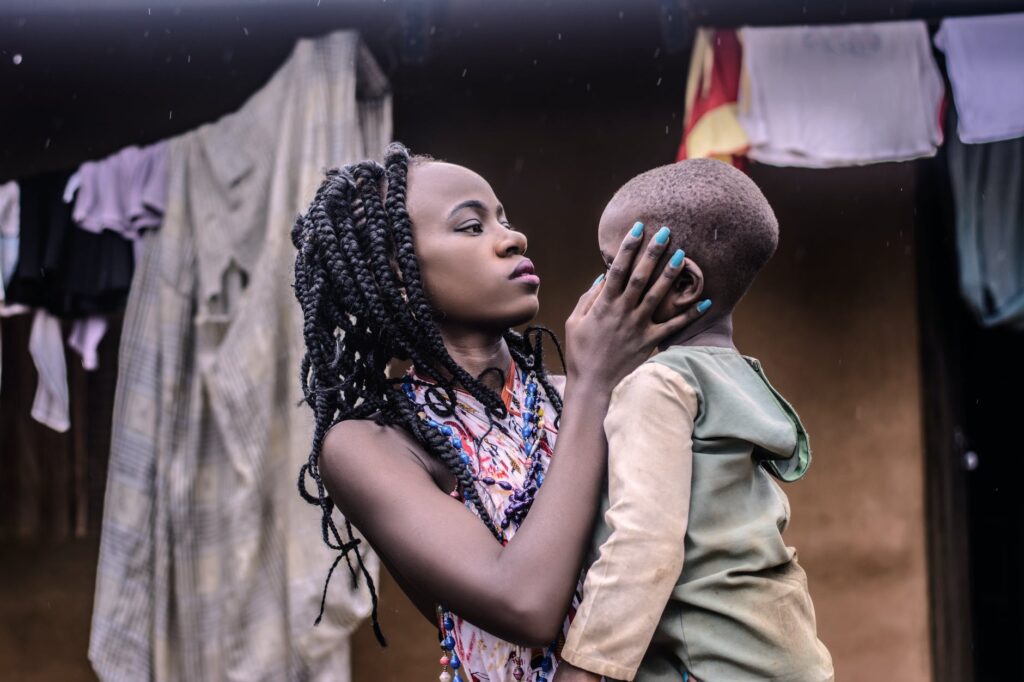Thus she had lain, sugarcane sweet
deserts her hair, golden her feet
mountains her breasts, two Niles her tears.
Thus she has lain, Black through the years.
Over the white seas, rime white and cold
brigands ungentle, icicle bold
took her young daughters
sold her strong sons
churched her with Jesus
bled her with guns.
Thus she has lain
Now she is rising, remember her pain
remember the losses, her screams loud and vain
remember her riches, her history slain
now she is striding, although she has lain.
Critical Analysis of Poem “Africa”
“Africa” by Maya Angelou is an unconventional poem that creates a lasting impression on the readers’ minds. Its basic theme is particularly related to a region that has newly asserted its role in the comity of nations. The world has always exploited Africa and different world powers have played with its resources in different ways. They have always come and looted her. Its beautiful terrains have always been devastated by the occupiers and usurpers. Its powerful people have always been made slaves. Until recent times the Europeans used to come and loot its people. They used to take their young boys and girls to their respective countries and make them slaves.
“Africa” is a beautiful example of personification. The region resembles a young African woman whose body pleasures have always lured the outsiders. The physical attractions that the continent presents are the main causes of its sufferings. The poet sees her as a young black African woman who has an attractive body. Naturally, such attractions would ultimately inspire the colonial powers to make adventures against her. Resultantly, Africa has been the object of the colonial power-politics and in the process always remained under occupations. The “Africa”, as a young lady, has always been raped and subjected to atrocities under occupation.
Explanation of Stanzas
In the first stanza of the poem, the poet depicts Africa as a young black African woman who presents her sweet pleasures in the form of sugarcane. Africa is famous for its sugarcane crop which is produced in such abundance that the outsiders will always wink at its sweets. The lines “Thus she had lain sugar sweet” suggest that the region has always presented sweets to the world. In other words, due to its docile nature, Africa has always encouraged people to exploit her resources and thus abandon her whenever the usurpers feel satiated. Her desserts are her hair and her feet are golden.
The huge mountains are her breasts and the two Niles are her tears. In the poet’s depiction of Africa, she is personified to be a young black lady of immeasurable body pleasures, but the” two Niles her tears” suggest that she is dejected and her tears tell the story of her being repressed throughout the ages. In this process of repression and deprivation, she has lost her identity and simply performs as a woman who works in a brothel, who, despite the realization of her miseries and misfortunes, makes herself available to more repression and exploitation.
Second Stanza
The second stanza describes the people who have exploited “Africa” so blatantly and shamelessly. The looters have always entered Africa in various disguises. Sometimes they were ruthless robbers who plundered the region and took away her young daughters as their captives and raped them abominably. They always disgusted the human beauty of Africa with their nefarious designs. They indulged in human trafficking and made the young men and women of this great continent available to the international market where the buyers bought them and made them render their petty services.
The men were made slaves and the women were made to satiate their physical desires. The poet refers to these robbers as “brigands ungentle”. Africa has also been exploited in the name of religion. The intruders used religion to camouflage their hidden agendas. In the name of Jesus and with a view to spreading religious ordeals, they brought guns and swords with them and inflicted heavy wounds on the always- docile and easily governable Africa. Africa always dithered to stand against these tides. In all these adventures Africa proved itself to be compromising on her integrity and honor. She, instead, accepted these intruders and let them easily rule her.
Third (Last) Stanza
The last stanza presents a different picture of Africa. As compared to the earlier two stanzas, wherein Africa is considered to have been accepting foreign powers easily ruling it and exploiting its precious resources, the last stanza depicts a completely defiant and revitalized Africa. Now it is rising to the challenge and recognizes its importance.
Now, it can glare defiance at the invaders and exploiters. Her example is of a duck that moves on the surface of the water while keeping her top calm and unfurled and paddling like a hell underneath. Africa, in all these years of oppression and repression and instead of being resentful and reactionary, kept her tragedies to her heart and drew strength from them. Like a volcano, which nobody can foretell its sudden eruption, Africa too invisibly gained strength and when it sensed that it was high time to defy, it defied the intruders. While remembering her past sufferings it now rises to fill in the past gaps and present herself in a more vibrant opposition to injustices being inflicted on her.

